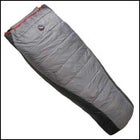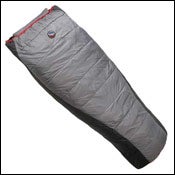Yeah, glad I didnt head out there this past weekendblizzard conditions, followed by a near-hurricane, followed by torrential rains. Sweet!
Big Agnes Cross Mountain Sleeping Bag
 Cross Mountain Sleeping Bag
Cross Mountain Sleeping BagIn principle, youre on the right track. Insulation is insulation, and how you get there doesnt really matter. Several manufacturers sell either liners or overbags” designed specifically to add degrees to another bag, or to stand alone as a lightweight bag. The Big Agnes Cross Mountain ($128; bigagnes.com), for example, is a Polarguard Delta-insulated bag that adds 25 degrees, more or less, to the comfort rating of a bag stuck inside of it.
Where it gets a bit tricky is how two different bags fit together. For maximum warmth, a sleeping bag needs to fit its occupant reasonably snugly, so that you dont have too much air space to warm up. But you also dont want to be pushing against the insulation, as that can squeeze it between the bag liner and bag shell and reduce its effectiveness. So stuffing one sleeping bag inside another may not yield the desired result if simply smashed inside another. Similarly, because the Arroyo and the Hummingbird/Lark are fairly trim mummies, you might find yourself a little squeezed. The Arroyo is a little narrower than the Hummingbird, and because its rated to a bit higher temperature has thinner insulation. So Id start by using the Arroyo as the inner bag.
What you add temperature-rating-wise is beyond me, as there are too many variables. But youd surely have a bag that would take you close to zero Fahrenheit, if not lower.
The 2008 Winter ���ϳԹ��� Buyers Guide is now online! From snow sports to trail-running to camping, get reviews of more than 300 new gear must-haves.


